Top 10 Scariest Dinosaurs
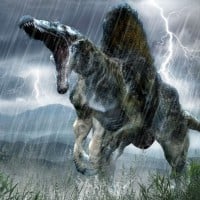 Spinosaurus is a genus of theropod dinosaur that lived in what now is North Africa, during the lower Albian to lower Cenomanian stages of the Cretaceous period, about 112 to 97 million years ago.
Spinosaurus is a genus of theropod dinosaur that lived in what now is North Africa, during the lower Albian to lower Cenomanian stages of the Cretaceous period, about 112 to 97 million years ago. When you really think about it this thing is SCARY! It's the tallest carnivore known to walk planet earth. It can grow to 30 ft in height and about 60 ft in length! Yes, maybe Spinosaurus isn't the strongest dinosaur and maybe he doesn't have the bite force like the Tyrannosaurus rex does, but I do know that the spinosaurus is fast and has long SHARP claws that could snatch you, unlike the T rex. The T rex can't swipe you and snatch you because he has tiny arms. So, the spinosaurus has sharp claws, long arms, can run fast, and can swim. That's a lot of good things, because of those good things I think that the spinosaurus is the scariest dinosaur. Now I should be thankful that this ABSOLUTELY SCARY creature doesn't roam the earth anymore.
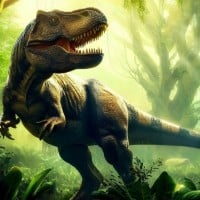 Tyrannosaurus, meaning "tyrant lizard", from the Ancient Greek tyrannos, "tyrant", and sauros, "lizard" is a genus of coelurosaurian theropod dinosaur. It also had a tremendous bite force, the strongest of any Dinosaur and living terrestrial animal. Its bite force reached up to 12,800 pounds (roughly... read more
Tyrannosaurus, meaning "tyrant lizard", from the Ancient Greek tyrannos, "tyrant", and sauros, "lizard" is a genus of coelurosaurian theropod dinosaur. It also had a tremendous bite force, the strongest of any Dinosaur and living terrestrial animal. Its bite force reached up to 12,800 pounds (roughly... read more Why is this on top? T. rex should be on the top, since it had powerful jaws and did often hunted terrestrial prey, unlike Spinosaurus.
This list is a joke, considering that T. rex is only at 6th. The King definitely deserves first place (Or second to Utahraptor at least) because let's be honest, Tyrannosaurus has the most powerful bite of any land animal that ever lived.
And that's not all. Tyrannosaurus had a phenomenal sense of smell and it's eyesight is 13 times greater than a human's (In turn, it's higher than a hawk). Not to mention Tyrannosaurus was surprisingly fast for its size and it's bad ass, terrifying appearance. And lastly, it may have hunted in packs...
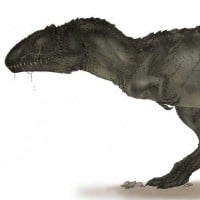 Carcharodontosaurus is a genus of carnivorous carcharodontosaurid dinosaurs that existed between 100 and 94 million years ago, during the Cenomanian stages of the mid-Cretaceous Period.
Carcharodontosaurus is a genus of carnivorous carcharodontosaurid dinosaurs that existed between 100 and 94 million years ago, during the Cenomanian stages of the mid-Cretaceous Period. I love the look of carcharodontosaurus but if I met up with a hungry one I would probably run and hide my sent.
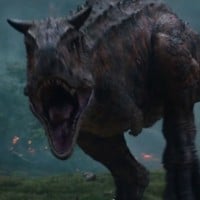 Carnotaurus, meaning "Meat eating Bull" in Ancient Greek, is a genus of abelisauridae theropod dinosaur that lived in what is now South America about 70 million years ago in the Late Cretaceous period.
Carnotaurus, meaning "Meat eating Bull" in Ancient Greek, is a genus of abelisauridae theropod dinosaur that lived in what is now South America about 70 million years ago in the Late Cretaceous period. At the dinosaur ride in Disney animal kingdom this thing was huge. For one thing it means meat eating bull and it has long arm to snatch you. A the horns it's like a devil dinosaur definitely SCARY.
If you saw Jurassic World Fallen Kingdom then you know this guy. The horns and the angerness in its eyes are what I think makes this dinosaur place in top 3
Bro carnotaurus had small arms which were smaller then the t.rexes arms but still my favorite dino
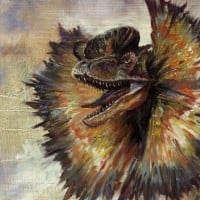 Dilophosaurus is a genus of theropod dinosaur. It contains a single known species, Dilophosaurus wetherilli, known from fossil remains found in the Kayenta formation of Arizona.
Dilophosaurus is a genus of theropod dinosaur. It contains a single known species, Dilophosaurus wetherilli, known from fossil remains found in the Kayenta formation of Arizona. I might be the only person who is afraid of their favourite.
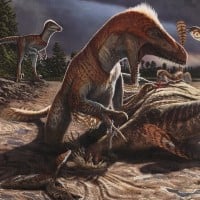 Utahraptor is a genus of theropod dinosaurs. It contains a single species, Utahraptor ostrommaysorum, which is the largest known member of the family Dromaeosauridae.
Utahraptor is a genus of theropod dinosaurs. It contains a single species, Utahraptor ostrommaysorum, which is the largest known member of the family Dromaeosauridae. Utahraptor is among my favorite theropods. This animal was like a Velociraptor on steroids! It was a perfect combination of predator, instinct, smarts, strategy and stealth. A true martial arts master, but with feathers.
The largest Dromaeosaur, it had a wide array of weapons and was fast enough to chase down and kill a human. It was small enough to go anywhere a human can, but big enough to be scary.
Utahraptor wasn't that scary, it only jumped and kicked with its claws!
 Allosaurus is a genus of large theropod dinosaur that lived 155 to 150 million years ago during the late Jurassic period.
Allosaurus is a genus of large theropod dinosaur that lived 155 to 150 million years ago during the late Jurassic period. Much scarier than the others when you look at science. This creature didn't have a strong bite Force like a T-Rex, but instead had incredible pressure tolerance and powerful neck muscles. Therefore it used its head like an axe smashing you until you couldn't run any more and died from shock and blood loss. Definitely worse than a quick and powerful bite from a Trex
Much smarter and faster than T. rex
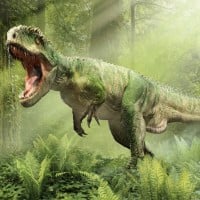 Giganotosaurus is a genus of theropod dinosaur that lived in what is now Argentina, during the early Cenomanian age of the Late Cretaceous period, approximately 99.6 to 97 million years ago.
Giganotosaurus is a genus of theropod dinosaur that lived in what is now Argentina, during the early Cenomanian age of the Late Cretaceous period, approximately 99.6 to 97 million years ago.
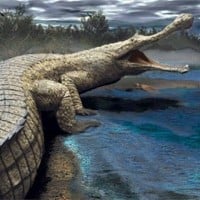
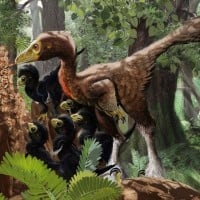 Troodon is a dubious genus of relatively small, bird-like dinosaurs known definitively from the Campanian age of the Cretaceous period. It includes at least one species, Troodon formosus, known from Montana.
Troodon is a dubious genus of relatively small, bird-like dinosaurs known definitively from the Campanian age of the Cretaceous period. It includes at least one species, Troodon formosus, known from Montana.
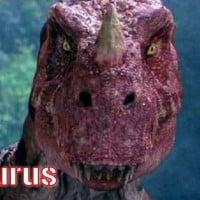 Ceratosaurus was a carnivorous theropod dinosaur in the Late Jurassic period (Kimmeridgian to Tithonian).
Ceratosaurus was a carnivorous theropod dinosaur in the Late Jurassic period (Kimmeridgian to Tithonian). Ceratosaurus was a medium sized dinosaur that grew up to about 25 feet. Ceratosaurus had a small horn on it's nose, most likely to show dominance. It was a slow carnivorous dinosaur that hunted anything from lizards to small saurapods.
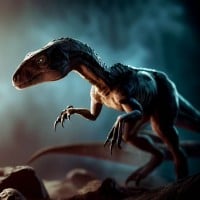 Velociraptor is a genus of dromaeosaurid theropod dinosaur that lived approximately 75 to 71 million years ago during the later part of the Cretaceous Period.
Velociraptor is a genus of dromaeosaurid theropod dinosaur that lived approximately 75 to 71 million years ago during the later part of the Cretaceous Period.
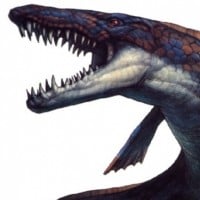
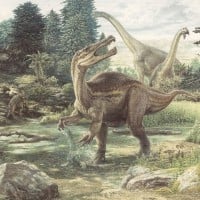 Baryonyx is a genus of theropod dinosaur which lived in the Barremian stage of the early Cretaceous Period, about 130–125 million years ago.
Baryonyx is a genus of theropod dinosaur which lived in the Barremian stage of the early Cretaceous Period, about 130–125 million years ago.
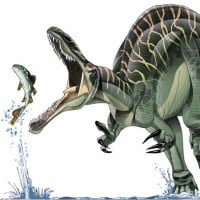 Suchomimus is a genus of large theropod dinosaur with a crocodile-like skull that lived between 125–112 million years ago, during the Aptian to early Albian stage of the Cretaceous period in Niger, Africa.
Suchomimus is a genus of large theropod dinosaur with a crocodile-like skull that lived between 125–112 million years ago, during the Aptian to early Albian stage of the Cretaceous period in Niger, Africa. Suchomimus lived in North Africa and mainly ate fish but could adapt to land as well. Suchomimus' main weapons were the deadly claws. Its teeth were designed to grip and once it grabs on, there's no escape...
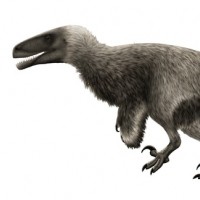
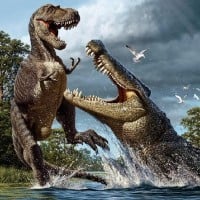 Deinosuchus is an extinct genus related to the alligator that lived 80 to 73 million years ago, during the late Cretaceous period.
Deinosuchus is an extinct genus related to the alligator that lived 80 to 73 million years ago, during the late Cretaceous period.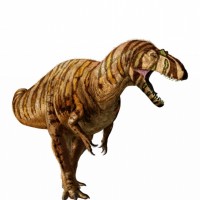
Metriacanthosaurus means "Moderately- spined lizard". It lived around the upper Oxford Clay of England, and lived in the mid Jurassic Period (about 160 million to tears ago). This Therapod grew up to 26 feet long and 6 feet tall, making it a medium sized carnivore weighing at 2,000. pounds.
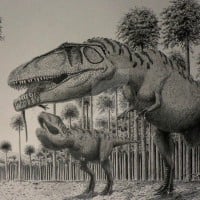 Mapusaurus was a giant carnosaurian dinosaur from the early Late Cretaceous of what is now Argentina and possibly Chile.
Mapusaurus was a giant carnosaurian dinosaur from the early Late Cretaceous of what is now Argentina and possibly Chile. My favorite dinosaur looks similar to the Giganotosaurus, and Carcharodontosaurus. If those two are up there this should as well, it has a huge skull, and hunted the biggest dinosaurs.
 Pteranodon lived during the late Cretaceous geological period of North America in present-day Kansas, Alabama, Nebraska, Wyoming, and South Dakota.
Pteranodon lived during the late Cretaceous geological period of North America in present-day Kansas, Alabama, Nebraska, Wyoming, and South Dakota.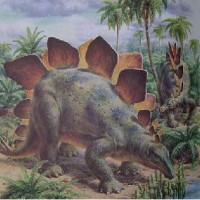 Stegosaurus is a type of armored dinosaur. Their fossil bones have been found in rocks dated to the Late Jurassic period, between 155 and 150 million years ago, in the western United States and Portugal.
Stegosaurus is a type of armored dinosaur. Their fossil bones have been found in rocks dated to the Late Jurassic period, between 155 and 150 million years ago, in the western United States and Portugal. These are my top 10 dinosaurs, not rated. Triceratops, Stegosaurus, Allosaurus, Ankylosaurus, Corythosaurus, T rex, (obviously) Utahraptor, Giganotosaurus, Deinonychus, and Penteceratops. No offense, but I mostly like herbivores.
 Nyctosaurus is a genus of pterodactyloid pterosaur, the remains of which have been found in the Niobrara Formation of the mid-western United States, which, during the late Cretaceous Period, was covered in an extensive shallow sea.
Nyctosaurus is a genus of pterodactyloid pterosaur, the remains of which have been found in the Niobrara Formation of the mid-western United States, which, during the late Cretaceous Period, was covered in an extensive shallow sea.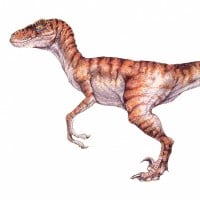
This is one of the scariest animals that ever lived! It lived in the Cretaceous period and it hunted in packs, which means a pack of Deinonychus' could eat a whole grown Argentinosaurs!
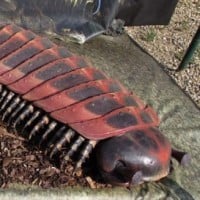
The most terrifying arthropod ever to live... As long as a man is tall, it is the largest arthropod to roam our earth... If you don't vote... You will find this in a dark alley, on Friday 13th...
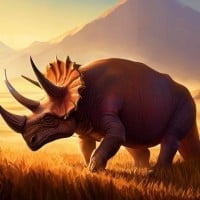 Triceratops is a genus of herbivorous ceratopsid dinosaur that first appeared during the late Maastrichtian stage of the late Cretaceous period, about 68 million years ago in what is now North America.
Triceratops is a genus of herbivorous ceratopsid dinosaur that first appeared during the late Maastrichtian stage of the late Cretaceous period, about 68 million years ago in what is now North America.